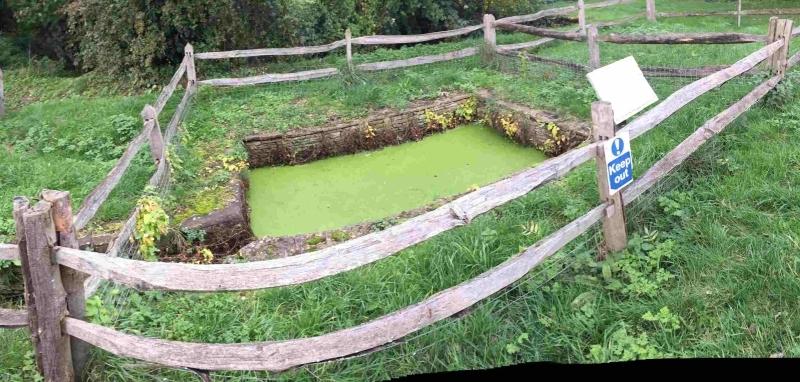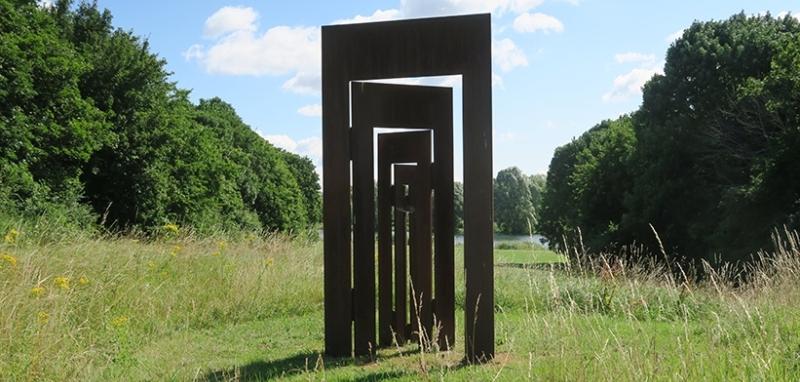From sheep to jets – discovering Peterborough’s history
Buildings archaeologists are used to working on many different structures, including domestic, religious, industrial or commercial buildings – generally anything with a roof. Yet a recent project for Peterborough City Council really put our definition of ‘building’ to the test.
The Local List – or more formally the ‘List of Heritage Assets in Peterborough’ – is a register of buildings, features and sites which are important to the history of Peterborough and its surrounding villages. The list doesn’t include Listed Buildings or Scheduled Monuments, but rather ‘heritage assets’ nominated by local interest groups. We were asked to use the technical terminology we normally apply to historic buildings to describe over 350 assets for the council’s records. Funded by Historic England, the purpose of this initiative was to focus on structures or features which might not fit the traditional definition of heritage.
This project truly tested our knowledge and expanded our understanding of the concept of heritage, while allowing us to learn more about the history of Peterborough. But what exactly is a ‘heritage asset’? Here are some of our favourites.
This guard looks like they are winging it!

The RAF Plane, at RAF Wittering, is visible to everyone passing along the A1. This is a Harrier GR.3 jet plane, acting as gate guard to the base. RAF Wittering received the first Harrier, the GR.1, in 1969 and had various generations until 1989.
Right, shall we get back on track?...

The Nene Valley Railway runs along part of the old Peterborough to Northampton line. The line passes through Orton Mere, Overton, Ferry Meadows and Wansford. It was the location for two James Bond films (Octopussy and Goldeneye), in which it passes for East Germany and Saint Petersburg. There are several other listed assets along the line, including signal boxes, bridges, and three stations (Ferry Meadows station is pictured above).
Do ewe need a baaaaath?

This is a rare survival of an old sheep wash with enclosure and pit in Bainton. The series of enclosures allowed for livestock to be separated and contained whilst the pit was in use.
This is getting off to a good 'art!

This Untitled sculpture by Miles Davies dates from 1989 and is part of the Thorpe Meadows Sculpture Trail in the Nene Park. Its design reflects the shape of a series of doorways, moving the visitor from the exterior to the interior of the park. Made of steel, it changes colour throughout the year, particularly in autumn, reflecting the nature that surrounds it.
Some dis-organ-ised architecture next...

The tower, battlements and tracery window of the Old Rectory in Etton might give it a medieval appearance, but this building is actually Victorian. Restored around 1854 this was the rectory of the nearby St Stephen’s Church. The tower holds a staircase, as we can see from the small, staggered, arched windows in the centre of the picture. The tracery window next to it seems at odds in a domestic building, but maybe it was a link to the nearby church. Medieval houses often had tall windows lighting a central open hall, but the window of the Old Rectory was probably designed to light a modest entrance hall and impress visitors.
A local landowner has been alming the poor with houses

These Almshouses in Helpston were funded by Sir James Bradford, a local businessman, on land donated by the Fitzwilliam family, local peerage based at Milton Hall. The design is U-shaped around a central courtyard with a water pump. Philanthropic buildings like this were popular in the Victorian period (1837-1901) onwards. Their architecture reflected the status of their patrons, whilst still being highly functionable.
Let's not take things for granite...

Barnack’s hills and holes is a distinct area of earthworks formed by quarrying. Starting in the medieval period (1066-1500) the limestone of this area was highly sought after. The hills represent the heaps of rubble thrown up by the digging of the holes. The site is now a Nature Reserve and a Site of Specific Scientific Interest.
We hope you’ve enjoyed this short tour of Peterborough’s local heritage. Thanks go to Brigid Geist and William Stafford for helping to complete this project, and to Peterborough City Council for commissioning the work. Unless otherwise stated photo copyright lies with Peterborough City Council.
You can search for nominated assets in Peterborough here. Your local authority might also have a Local List you can search that highlights the history of your area.